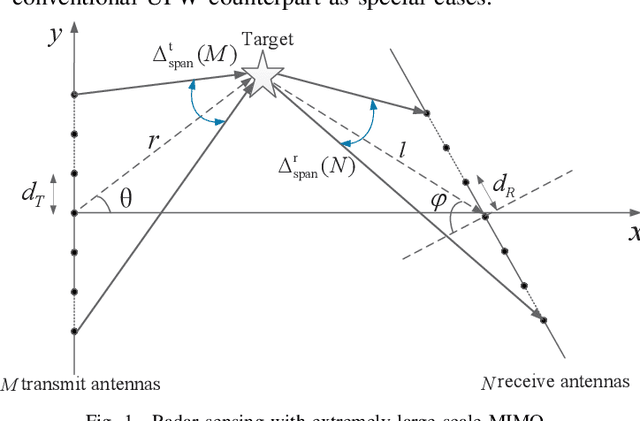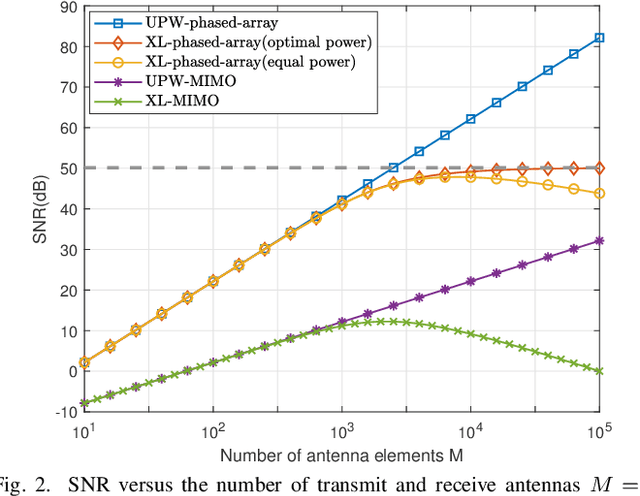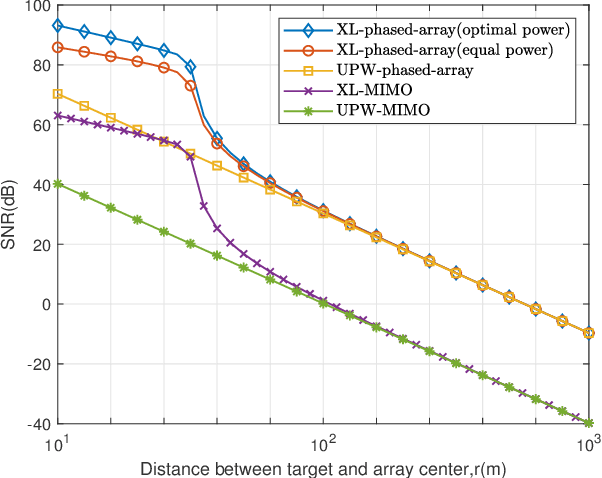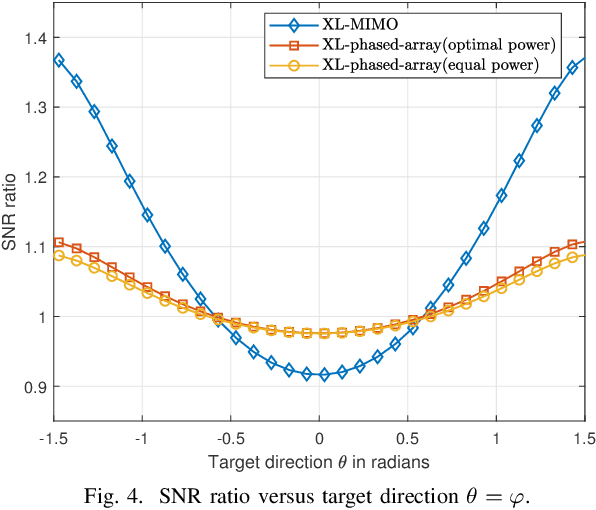SNR Scaling Laws for Radio Sensing with Extremely Large-Scale MIMO
Paper and Code
Jun 10, 2021



Mobile communication networks were designed to mainly support ubiquitous wireless communications, yet they are expected to also achieve radio sensing capabilities in the near future. Most prior studies on radar sensing focus on distant targets, which usually rely on far-field assumption with uniform plane wave (UPW) models. However, with ever-increasing antenna size, together with the growing need to also sense nearby targets, the far-field assumption may become invalid. This paper studies radar sensing with extremely large-scale (XL) antenna arrays, where a generic model that takes into account both spherical wavefront and amplitude variations across array elements is developed. Furthermore, new closed-form expressions of the sensing signal-to-noise ratios (SNRs) are derived for both XL-MIMO radar and XL-phased-array radar modes. Our results reveal that different from the conventional UPW model where the SNR scales linearly and unboundedly with N for MIMO radar and with MN for phased-array radar, with M and N being the transmit and receive antenna numbers, respectively, more practical SNR scaling laws are obtained. For XL-phased-array radar with optimal power allocation, the SNR increases with M and N with diminishing returns, governed by new parameters called the transmit and receive angular spans. On the other hand, for XL-MIMO radar, while the same SNR scaling as XL-phased-array radar is obeyed for N, the SNR first increases and then decreases with M.
 Add to Chrome
Add to Chrome Add to Firefox
Add to Firefox Add to Edge
Add to Edge